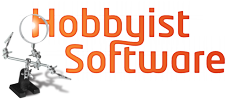Technology is evil only through its misuse, and in the case of this dirty dozen the potential for abuse is frightening

Build a better mousetrap, and someone will use it to kill humans. It seems inevitable that technological advances always seem to come with misuses or some kind of maluse. The technology isn’t bad, just its use. So as technology advances and gets smaller and more accurate, it seems some people have been finding ways to spy on and intrude into our lives. I try not to fall for the tinfoil hat nonsense that you find on places like Alex Jones’s site or Godlikeproductions.com, but sometimes it’s hard not to. And in practice, as critical infrastructure security adviser Steve Hunt puts it, Americans are notoriously willing to give up privacy in many instances.

“Privacy is not something we protect, exactly,” Hunt said. “It is something that seems to have no value at all when we are the ones sharing personal information. We proudly post the entire genealogies of our children on Facebook … However, we bristle at the thought of someone knowing something about us that we haven’t knowingly shared. I don’t think Big Brother is the government or, more precisely, the NSA. Big Brother is us. We are the ones installing cameras and scanning equipment to protect our private sector homes, businesses, and neighborhoods. We are the ones making our lives visible and digitally recorded,” he said.
Gone are the days of rolling your fingers in black ink to have your prints taken. iDair has a system that can scan and identify a fingerprint from nearly 20 feet away. It boasts that the AIRPrint product (sounds like an Apple product) has “the ability to rapidly collect fingerprints at a standoff distance [and] dramatically improves the identification options for security personnel.” iDair’s primary customer is the military, but it’s pushing into the commercial space. The device is about the size of a small flashlight, so now your employer can set one up at the front door of the office and within a few days have the prints of the entire company.
We normally associate keystroke loggers with malware from criminal syndicates trying to steal our bank logins and password — but in some cases, it’s legal. The U.S. Food and Drug Administration installed spyware with keystroke capturing on the computers of a group of agency scientists. The software is called Spector360, and its manufacturer says it’s about stopping intellectual property theft and data breaches. But it caught the FDA scientists sending emails to lawmakers and others about medical devices they thought were dangerous, and the scientists are now suing. Two other government agencies, the TSA and the Federal Maritime Commission, are also being investigated for using intrusive employee monitoring software.

Genia Photonics makes a laser scanner technology that it says is able to “penetrate clothing and many other organic materials and offers spectroscopic information, especially for materials that impact safety such as explosives and pharmacological substances.” Genia claims it can identify individual cancer cells in a real-time scan or detect trace amounts of harmful chemicals in sensitive manufacturing processes. But as always, it’s not so much the technology itself as how it can be used or misused. With Genia’s tech, the Department of Homeland Security will be able to scan from up to 164 feet away for traces of drugs or explosives on your clothes, or changes in your biochemistry. (If your adrenaline levels are up, they might have a word with you.)
In the futuristic movie Minority Report, a psychic trio could predict future crimes, and police arrested pre-criminals. Instead of psychics, the San Francisco area’s BART subway system is using surveillance cameras to analyze “suspicious behavior” and alert guards to potential criminal or terrorist activity. The cameras come from BRS Labs, which stands for Behavioral Recognition Systems. BART will install 288 cameras at 12 hubs, each capable of scanning 150 citizens at once. The cameras are programmed with a list of behaviors considered “normal”; deviations from the norm are classified as suspicious and guards are immediately notified. (The irony, of course, is that San Francisco is a city where “normal” has no clear definition.)

The NSA’s metadata collection was just the beginning. Federal agencies and law enforcement are using a database called VoiceGrid Nation and developed by Russia’s Speech Technology Center (which operates under the name SpeechPro in the United States) to scan and identify voices on phone calls within seconds. When authorities intercept a call and they’re not sure who’s speaking, VoiceGrid is called into action. SpeechPro claims 90 percent accuracy if the recording is decent quality and more than 15 seconds in length. The company’s president says the software is being is used in 70 countries to collect, store, and match voice recordings of intercepted conversations. Why were they intercepted? Why do you need to know that?

Palantir started to help PayPal fight against fraud, but has since moved into big data analytics for the FBI, CIA, and others. Its advisors include former Secretary of State Condoleezza Rice and former CIA director George Tenet. Palantir identifies related pieces of information in dozens or hundreds of databases within an organization and puts everything together at incredible speed. It can help banks find fraudsters — but it can know your every move. Rumors say Palantir was involved in finding Osama Bin Laden. With Palantir, the FBI can quickly assemble dossiers on U.S. citizens, “tying together surveillance video outside a drugstore with credit-card transactions, cell-phone call records, e-mails, airplane travel records, and Web search information.”
Remember those super-revealing backscatter X-ray machines that were removed from airports after loud protests? Well, they may come rolling down the street of your neighborhood. American Science and Engineering’s Z Backscatter Vans look like any box truck you see on the road, but they’ll peer through the cars of anyone in range looking for … who knows what? Joe Reiss, AS&E’s vice president of marketing, told Forbes the ZBV scans don’t capture nearly as much detail of human bodies as their airport counterparts. The company’s marketing materials say that the trucks’ “primary purpose is to image vehicles and their contents,” and not to “identify an individual or the race, sex, or age of the person.”

A cop asks for your license, registration, and cell phone. In his car, your phone is connected to Cellebrite to download your text messages, photos, video, and even GPS data. Your four-digit security code can’t hide your naughty sexting. The law is on your side in this — for now. The Michigan State Police, the first force in the nation to adopt Cellebrite, only uses the devices after obtaining a search warrant or the phone’s owner’s consent. But given the histories of some police departments, I’m wary. Cellebrite’s products are used to transfer your data from an old phone to a new one at a cell phone story, so this is another case of questionable use of good technology.

Illuminating Concepts makes LED-based streetlights called Intellistreets, which can auto-adjust to the brightness outside to help save power. They also include a Wi-Fi connection and built-in speaker, to stream audio broadcasts to anyone within earshot. Oh, and they also have audio and video recorders. These are supposedly to field calls for assistance. But if you’re walking in a city with Intellistreets, like with Las Vegas or Branson, Missouri, how comfortable are you knowing that the lampposts have Wi-Fi transmitters, a camera, and a microphone? Also included: proximity sensors to record pedestrian and road traffic, and optional video displays to broadcast advertising, Amber Alerts, and other “civic announcements.” And yes, this was with paid for with federal funds.

The FBI is rolling out an advanced $1 billion biometric system: Next Generation Identification (NGI), a nationwide database of mugshots, iris scans, DNA records, voice samples, and other biometrics. NGI’s facial recognition systems can find a single face from a pool of 1.6 million mugshots and passport photos with 92% accuracy in less than 1.2 seconds — even using photos in which the subject isn’t looking at the camera. The NGI pilot has used mugshots and driver’s licenses of known criminals — which would have been useless to stop the 9/11 hijackers with their clean records. But the NGI database won’t stop at mug shots. Agents could also upload a person of interest’s picture and have NGI’s cameras keep a lookout.

An IT consultant in England got suspicious after he noticed that his shiny new LG smart TV began showing him targeted advertisement based on programs he’d just been watching. So he used his laptop to monitor wireless traffic between the TV and his Wi-Fi receiver, and discovered every show he watched and every button he pressed on his remote control were being sent back to LG’s corporate headquarters in South Korea. London’s Daily Mail wanted to know: What if someone were giving credit card information to a shopping app that comes with these smart TVs? That might be intercepted by an identity thief. It certainly argues against a “smart TV.”

Adults may object to having their finger prints or iris scanned by a law enforcement or government entity, but kids don’t know better. So why not get the info from them? Puyallup School District in Washington State plans to put palm scanning devices in all of its lunch rooms to allow students to pay for their lunch with a wave of a hand. Needless to say, their parents are furious. Other schools, from elementary to university, are using iris scans as a replacement for traditional identification cards. There are several companies in this business, including Eyelock, BlinkSpot and Iris ID.
Foxnwolf comments…….
All of the above are in use NOW. Only you dont notice the subtle ones. Am all for Technology and I embrace it. But… in the wrong hands for the wrong reasons…







